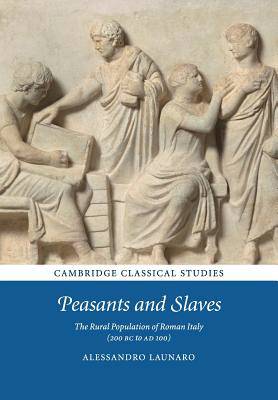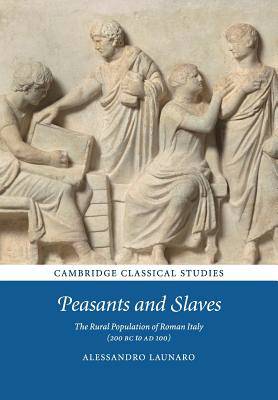
Door een staking bij bpost kan je online bestelling op dit moment iets langer onderweg zijn dan voorzien. Dringend iets nodig? Onze winkels ontvangen jou met open armen!
- Afhalen na 1 uur in een winkel met voorraad
- Gratis thuislevering in België vanaf € 30
- Ruim aanbod met 7 miljoen producten
Door een staking bij bpost kan je online bestelling op dit moment iets langer onderweg zijn dan voorzien. Dringend iets nodig? Onze winkels ontvangen jou met open armen!
- Afhalen na 1 uur in een winkel met voorraad
- Gratis thuislevering in België vanaf € 30
- Ruim aanbod met 7 miljoen producten
Zoeken
€ 67,95
+ 135 punten
Uitvoering
Omschrijving
The crisis of the Roman Republic and its transformation into an Empire have fascinated generations of scholars. It has long been assumed that a dramatic demographic decline of the rural free peasantry (which was supplanted by slaves) triggered the series of social and economic developments which eventually led to Rome's political crisis during the first century BC. This book contributes to a lively debate by exploring both the textual and the archaeological evidence and by tracing and reassessing the actual fate of the Italian rural free population between the Late Republic and the Early Empire. Data derived from a comparative analysis of twenty-seven archaeological surveys - and about five thousand sites - allow Dr Launaro to outline a radically new picture according to which episodes of local decline are placed within a much more generalised pattern of demographic growth.
Specificaties
Betrokkenen
- Auteur(s):
- Uitgeverij:
Inhoud
- Aantal bladzijden:
- 363
- Taal:
- Engels
- Reeks:
Eigenschappen
- Productcode (EAN):
- 9781108730068
- Verschijningsdatum:
- 24/01/2019
- Uitvoering:
- Paperback
- Formaat:
- Trade paperback (VS)
- Afmetingen:
- 170 mm x 244 mm
- Gewicht:
- 580 g

Alleen bij Standaard Boekhandel
+ 135 punten op je klantenkaart van Standaard Boekhandel
Beoordelingen
We publiceren alleen reviews die voldoen aan de voorwaarden voor reviews. Bekijk onze voorwaarden voor reviews.











